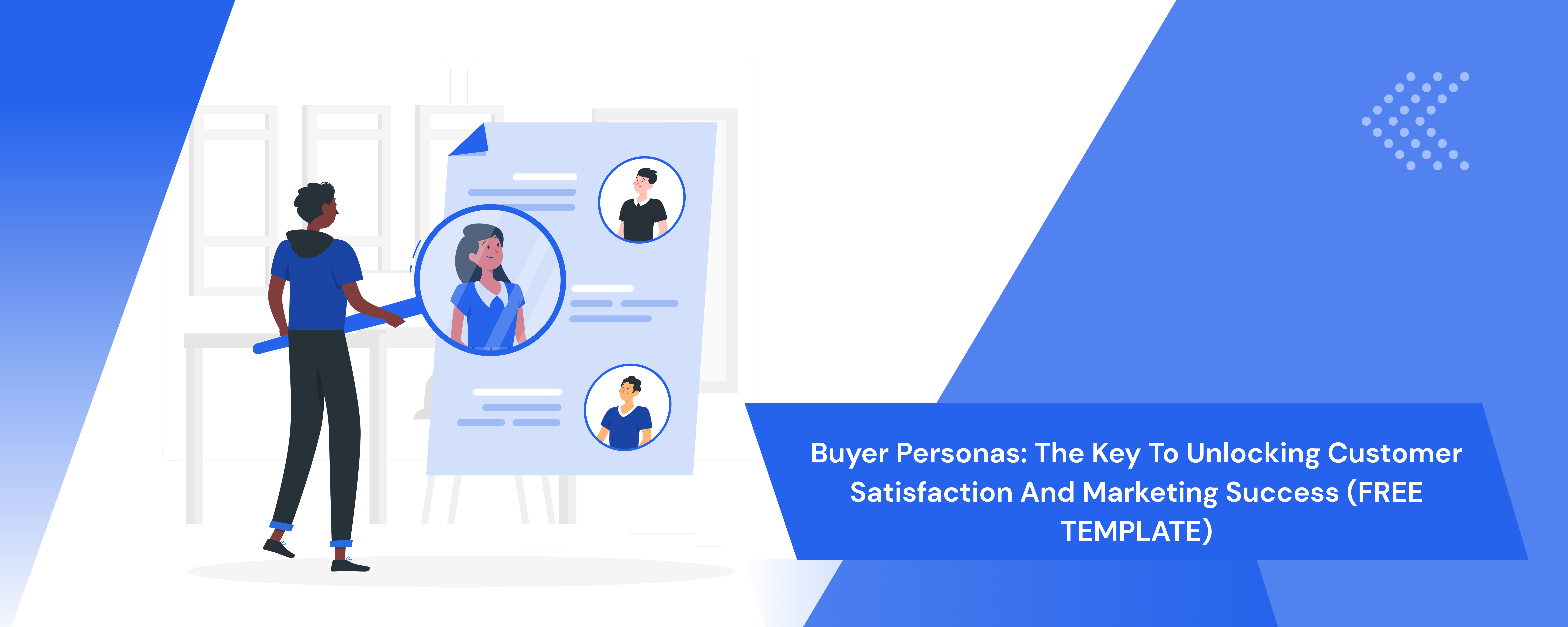Here’s a brief story for you.
At a point in our GoZen journey, we pivoted all our attention on our customers, positioning them at the center of our universe.
And no. We didn’t get stuck like Ross did.
Rather, we started generating results with them at our axis point.
We value our customers enough to get to know them, understand their friction points, and provide solutions.
All by creating a buyer persona for our productm GoZen Forms.
Read along to find out the rest of the story and discover how, with buyer personas, you can maximize marketing success and bring customer satisfaction.
Table of Contents
What is a Buyer Persona?
A Buyer Persona is the characteristics of a hypothetical person who resembles your ideal customer. It is created to have an idea about your target audience and tailor an experience unique to them.
This is achieved primarily by knowing their demographics, goals, and pain points and introducing a fix.
How is it Different from Customer and User Persona?
In a buyer persona, the said buyer is a new prospect and fictional, who makes buying decisions, coming from the background of industrial experience.
A customer persona is created from an existing customer who reflects their entire customer base.
A user persona defines the characteristics of end-users who will be using your product, different from those who buy the product for their team.
B2B and B2C Buyer Persona
The key difference between a B2B and a B2C buyer persona is that B2B buyers are business representatives whereas B2C buyers are individuals or mass audiences belonging to a particular market.
This is essential to observe because B2B and B2C customers differ from each other and have different needs and challenges.
ICP and Buyer Persona Difference
The ideal customer profile describes a fictional company whereas the buyer persona describes an individual who may be fictional or based on your existing customers.
Why Use Buyer Persona?
According to Marketing Insider Group, 93% of companies exceed lead and revenue goals using buyer personas.
77% of customers say they prefer companies that provide personalized experiences. A buyer’s profile can be a great reference while working on marketing strategies. Content creation can be streamlined according to the profiles you have on hand and segment your audience.
From all the data acquired, the customer profile can help you direct your efforts to the segmented audiences, and understand how your customers think.
Brands can capitalize on customers’ needs which are essential ones and those needs that serve the customer’s interests.
Benefits:
● Improves marketing outcome
● Customer satisfaction
● Better lead generation and conversions by making data-driven decisions
How to Create a Buyer Profile
A buyer, although an imaginary entity, is a cultured human with an ethnic, and geographical background. He has an identity that belongs to a group identity.
What sets them apart and asserts uniqueness is their demographic details such as age, country, gender, and education among others.
But the good old hard data is not enough for a buyer profile in the current times.
Psychographic details like personality, interests, goals, values, lifestyles, and other intangible data are also crucial to understanding customer psyche and behavior. It is required to tap into customers’ emotions and earn their trust.
But it won’t be enough to say how the buyers will evaluate and make a decision.
This raises factors like buyer’s needs and concerns. Notice the subtle but striking changes that have happened in this side of marketing.
5 Essential Questions to Profile a Game-Changing Buyer Persona
According to Adele Revella, CEO of Buyer Persona Institute, mere psychographic details are not enough. By asking these old questions anew, you can gain insights about your buyer which is more handy than generic information.
● What’s driving their desire for change?
● What do they expect to be different from earlier after making the purchase?
● What dissatisfied them with the previous services?
● How did they decide to buy?
● What propels them to consider your solution and what’s stopping them from doing it?
Getting to know your customers on a deeper level can build trust and loyalty in the relationship.
GoZen Forms Success with Buyer Persona
When GoZen began to think about its target audience, it collected all the above data and created a profile for industry experts like CEOs, Product Managers, Founders, and Marketing managers.
They belonged to diverse industries such as IT, SaaS, Marketing, Education and Non-Profit. With them in mind, we understood their problems with using non-intuitive, complicated forms and prioritized ease of use.
Within a short period, they were able to increase their form completion rate by 50% and sales conversion rate by 6% We welcomed a satisfied customer.
Want to see for yourself? Give our forms a try and hit your revenue targets.
Keep scrolling to avail a free buyer persona template curated by us.
Buyer Persona in Marketing Success
If you’re an avid reader of literary texts, then you’d know that personal resonance with the text happens from some of your past experiences. The reason why you’d relate to Anne Frank’s diary is because you’ve experienced something similar like Anti-Semitic hatred or your country’s war.
Similarly, audiences resonate with personalized content that speaks of their collective past or present experience that has thrown them into tough circumstances. It comes from being empathetic by placing ourselves in their shoes.
One of the ways to resonate is to communicate in the language they speak.
Hyper-personalization is the use of real-time data, as opposed to historical data, to provide customized and contextually relevant experiences.
It differs from personalization by analyzing behavioral data on the customer which is on a higher scale than, say, sending emails with the recipient’s name.
With hyper-personalization already here, leveraging AI and machine learning tools can be helpful in the analytics of large amounts of data, that are being gathered to provide a customized experience.
Personalized Content in Marketing Automation
Personalized Content in Marketing Automation is made possible by adding relevant information to your customer database and optimizing it with automation tools and software. For example, with the use of AI, automated personalized messages can be sent based on the customer’s previous purchases and activities.
So, worry not and take a bold step ahead by purchasing our state-of-the-art Content.Ai automation tool for social media marketing and GoZen Growth to generate personalized emails.
Because this is how marketing campaigns achieve success by using data-driven strategies, and buyer personas supported by AI automation.
Conclusion
Customer experience and customer satisfaction are the priorities of any business, whether B2B or B2C.
To be able to understand their obstacles from the demographic and psychographic data collected, the business undergoing multiple marketing campaigns has many advantages. They have a high probability of reception, conversion, and retention from giving great customer service.
This way the company will have achieved buyer fulfillment in no time.



